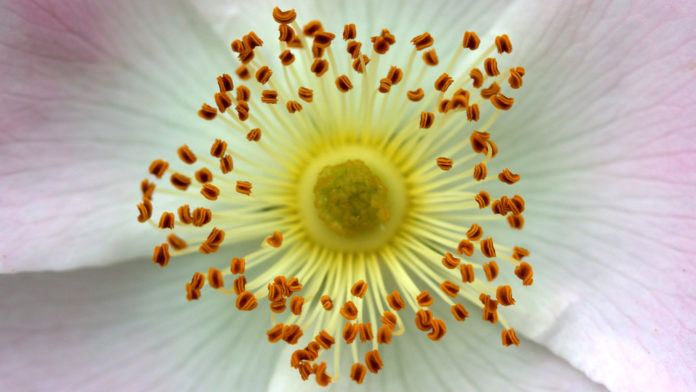Over the past 100 million years, flowering plants have evolved a spectacular array of adaptations to attract animal pollinators like bees, butterflies, moths, and birds. From visual cues, to sweet nectars, to attractive fragrances, many seed plants expend a lot of energy convincing pollinators to pick up and spread their sticky pollen.
But the recent global collapse of many wild pollinator populations is threatening the ability of these plants to reproduce.
Before these animal-plant partnerships evolved, almost all seed plants relied on wind for pollination. While animal pollination is more precise than relying on random wind currents, wind is a consistent resource that doesn’t rely on fluctuating pollinator populations.
Underscoring the severe decline of many wild pollinators, dozens of species of flowering plants are now reverting to wind pollination, including ragweed and many grasses. However, the mechanisms behind their transition remain unclear.
Evolutionary biologists David Timerman and Spencer Barrett at the University of Toronto probed into this mystery by looking at Thalictrum pubescens, a flowering plant in the buttercup family that is pollinated by both insects and wind. They believe that this species may be undergoing the transition to wind pollination, and studying them more closely could give clues on the properties that favour that adaptation.
The authors tested the biomechanical properties of flowers from nine populations of T. pubescens in Ontario, Canada over two consecutive growing seasons. Specifically, they were interested in the properties of their stamens, the pollen-producing organs of flowers, because their structure is one key to efficient wind pollination. Their study was published in Proceedings of the Royal Society B.
What sounds make stamens really dance?
Individual stamens were isolated on a vibrating table that the authors liken to a loudspeaker, exposing them to vibrations of different frequencies to see how their stamens would respond.
The stamens are made up of a thin stalk called a filament capped with a pollen-releasing anther. The stamens are such an important feature on these plants that flowers even lack petals; the most visible feature of the flowers is their white filaments.
At most frequencies, the stamens will simply follow the vibrations of the table, but there are natural frequencies at which they will move even more vigorously because they resonate at their natural frequencies.
These frequencies are important because the motion of the stamens themselves is critical to pollen release; wind alone can’t mobilize pollen because there is a boundary layer of nearly stationary air surrounding the anthers.
To release pollen, stamens need to move and shake readily. Their natural frequencies depended on their length, diameter, and mass, with long and thin stamens favouring a low natural frequency.
How do those movers and shakers bend to the wind?
Next, the authors isolated single flowers in a benchtop wind tunnel. They recorded high frame rate video of how the stamens move in response to five minutes of turbulent wind, and they also measured how much pollen could be collected on a greased microscope slide downwind of the flowers.
As predicted, the flowers with longer stamens and lower natural frequencies were more likely to vigorously shake, even at lower wind speeds. More pollen grains were also dispersed and captured onto the microscope slides.
When placed in screen houses with female plants, the same male plants also participated in greater seed production.
What happens if we bring back the birds and the bees?
Introducing pollinators like bees to the screen houses, the advantage of low natural frequency was lost. When the plants readily release and scatter their pollen by wind, less of it is available to be picked up by animal pollinators. In this scenario, both types of plants flourished equally.
Nonetheless, the authors believe that having both traits in a population sets the stage for the possibility to transition to wind pollination when animal pollinators are not available. However, they did not observe any natural ecotypes or environments that favoured the wind-adapted plants; all nine populations they collected contained a mixture of plants along a continuous spectrum of natural frequencies.
So while flowers today are known for their showy petals and distinctive fragrances, those adaptations could easily be lost if animal pollinators continue to decline. With future plant generations left to rely on the random scattering of the wind, the favoured traits could soon look very different than they have for the past 100 million years.









































